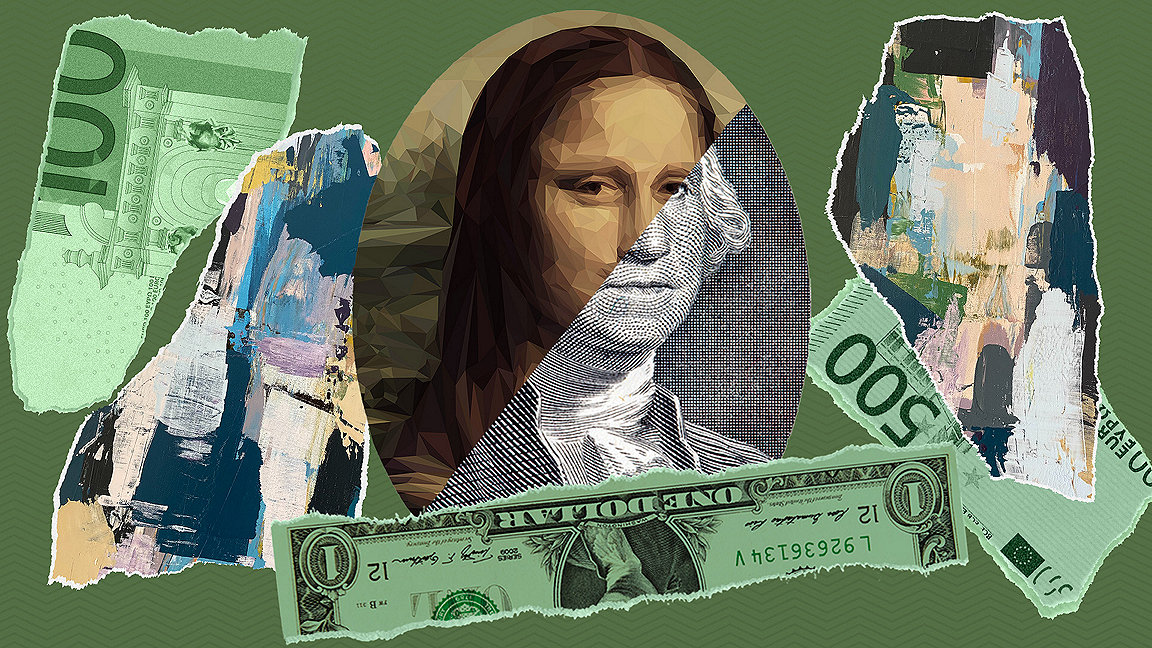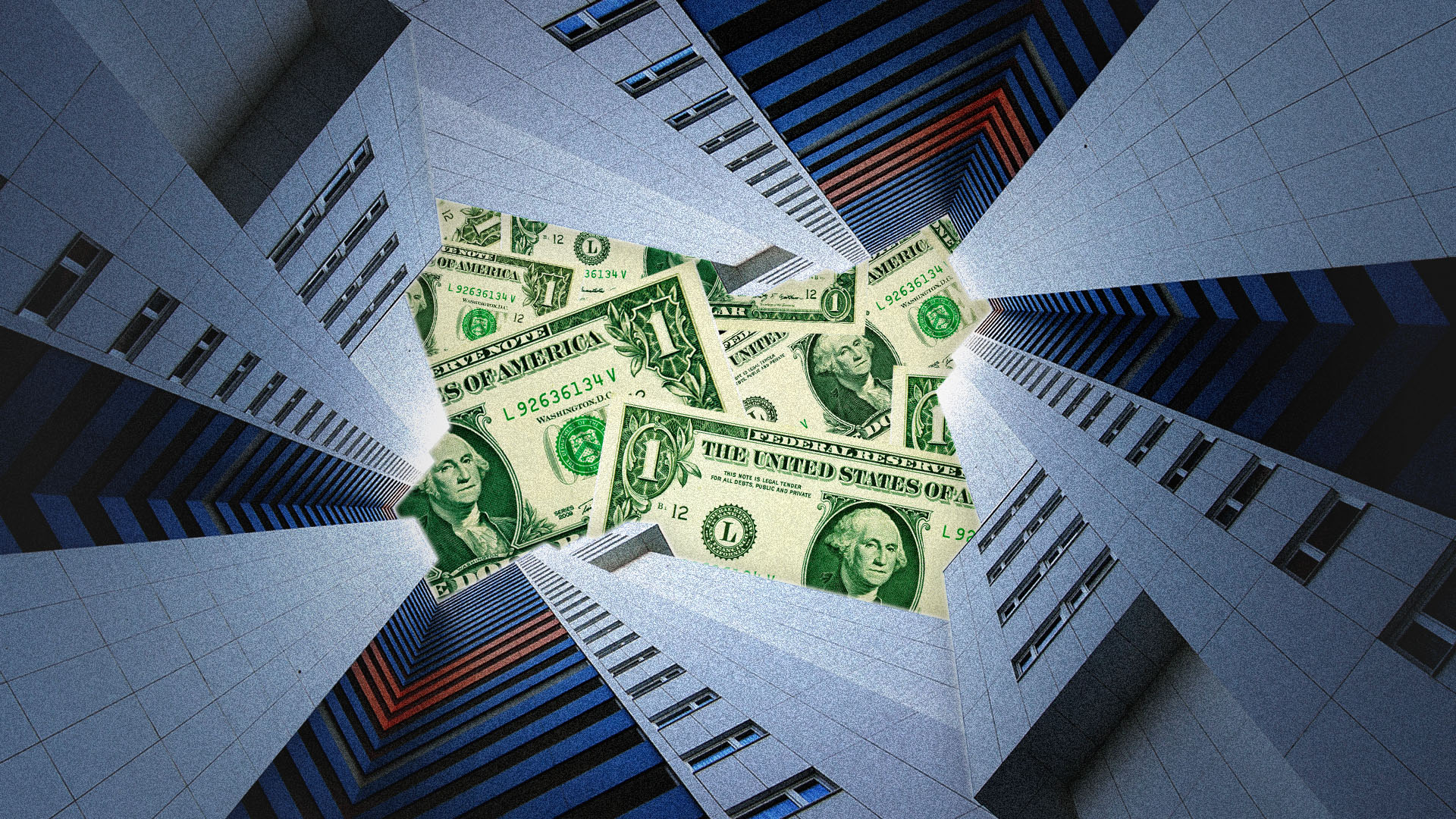
Doug Bort is walking me through an imaginary drug deal. He is a South American drug baron and I am the head of a Miami crime organisation wanting to buy a huge consignment of cocaine. I have the money and he has the drugs, but what we don’t have is a reasonable way of explaining the transaction. “Every dollar in the drug industry is illegal, it has to be laundered,” he says.
So many successful prosecutions have centred around following the money, that laundering the proceeds of crime has become increasingly complex and imaginative. During 21 years as a special agent with US Customs and Homeland Security Investigations (HSI), Bort saw how easily art could be used for such purposes.
“If I give you a $500,000 minor work by Monet plus $2.5m of cocaine, and you give me $3m, it is listed as payment for the Monet. It’s all done through shell companies as a legitimate sale of art,” he says. “On paper, there’s nothing that raises red flags. If a US company is buying this artwork, the IRS doesn’t care – I mean, paying too much for art isn’t a crime.”
Laundering money in this way works partly, he says, because art values are so varied – especially when attached to famous names – that it is easy to assign an inflated price without rousing too much suspicion.
Another factor working in criminals’ favour is the art industry’s reputation for secrecy. It is standard for buyers and vendors to make anonymity a condition of a sale with galleries and auction houses carrying out negotiations. And, while there is no doubt that many art collectors want to maintain privacy for legitimate reasons such as security, the lack of transparency also allows more nefarious deals to take place. A 2020 US Senate investigation, for example, described the art market as “the largest, legal unregulated industry in the United States” and noted how confidentiality had allowed the Russian billionaires, Arkady and Boris Rotenberg, to spend $18m on artworks despite sanctions against them.
Lack of transparency
“Privacy and non-transparency have led us to our present dilemma,” says Alvah T Beander FRICS, an appraiser specialising in African-American and African art. “The non-transparency is too non-transparent. We're looking at major auction houses, blue-chip dealers, and high net worth ‘star’ collectors being investigated and many times prosecuted for their involvement in these schemes. It's not some Al Capone guy who's connected to Vegas doing these things, many of the criminals are in the art industry inner circle.”
Of course, various governments have made attempts to address these abuses: the US has beefed up the Bank Secrecy Act and introduced an Anti-Money Laundering Act (although a more specific 2018 Illicit Art and Antiquities Trafficking Prevention bill failed to be enacted); the EU released its fifth Anti-Money Laundering Directive; and the UK has also adopted the British Art Market Federation’s Anti-Money Laundering Guidance. One of the main tenets of all these different pieces of legislation is that the identity and ownership of anyone wishing to sell a piece of art is established and that the source of the buyer’s wealth is also verified. It sounds like a reasonable approach but the art industry does not work like that.
“The art trade is very informal, it’s very handshake-oriented,” says Thomas Flynn, co-founder of the art research consultancy, Flynn & Giovani. “The people who prosper in the art market are those with a wide network within the market’s major institutions.”
Beander agrees and says that in this environment often full of people from wealthy backgrounds, it is easy for newcomers to feel intimidated and not to ask the right questions or even to turn a blind eye to shady practices.
Different types of crime
Two very different kinds of art crime have received recent media coverage – one involving paintings and the other with non-fungible tokens, better known as NFTs.
The first is art fraudster Inigo Philbrick, who was sentenced to seven years in prison for double selling the same artworks to different people.
In the second instance, the victim was actor Seth Green who had $300,000-worth of Bored Ape NFT’s stolen in a phishing attack.
Big business
The other factor – which is not unrelated – is the sheer amount of money to be made buying and selling art. “The financialisation of the art market has made it more risky”, says Flynn. “There has been an exponential rise in prices in the last 25 years which has made it more of a magnet for bad behaviour.”
He traces the explosion in values to the mid-90s when Russian oligarchs entered the international art market. Both he and Beander cite the Panama Papers as revealing how much art - as well as other assets - is in the ownership of complex webs of secretive shell companies based in tax havens, often owned by people trying to hide ill-gotten gains or, in the case of Russians, trying to protect assets from being seized. “It’s like matryoshka dolls,” says Flynn. “Ownership within ownership, you don’t know who the end user is. Clients don’t always want to give that information.”
Beander's advice is that appraisers must be extremely circumspect when agreeing to work with a new client. “I only take referrals, and I research my clients,” she says. “I do more than a Google search. I want to know who I'm dealing with, and it has to start with them talking personally to me. I don't want any misunderstandings. I've also built-in money-laundering verbiage into my terms and conditions. But at least twice a year, four times last year, I've walked away from someone who has approached me for work because I had concerns.”
Finding a solution
Some sort of database of art ownership could tackle many of the conditions that allow money laundering to take place: a register that would give a trail of provenance which Flynn describes as “more critical than ever before”. The Dutch entrepreneur, Nanne Dekking, is attempting to establish a digital register along these lines so that the authorities and buyers can be certain artworks are legitimate.
This is no small matter, as Bort, who now runs his own art recovery consultancy, mentions that ISIS has a side-hustle selling looted antiquities from archaeological sites and museums to dealers who consign them to European and American galleries and auction houses. On top of this, the art at the centre of money-laundering cases does not always have the cleanest of histories which means that, counter-intuitively, it can be used as leverage when the owner is arrested. “They can be busted for another crime and, as a form of negotiation, the criminal could say, ‘We may have information on a stolen painting’,” Bort explains. “The museum or collector that it belongs to wants it back, no one wants it to be lost forever so it’s an effective tool to use. It has happened a lot.”
But perhaps the easiest way of cutting down on money laundering is simply to regulate and regulate some more. In 2012, in Mexico, where large parts of the economy are controlled by drug cartels, the government clamped down on cash sales and demanded that businesses, including galleries and auction houses, provided much more information about their clients. The result? Art sales fell by 70%. “Proof-positive that the cartels were using art for money laundering,” says Bort. And proof as well that it can be tackled.
"It's not some Al Capone guy who's connected to Vegas doing these things, many of the criminals are in the art industry inner circle” Alvah T Beander FRICS, art appraiser
RICS guidance on bribery, corruption, money laundering and terrorist financing
RICS has developed guidance intended to support members and firms in the UK to understand their obligations under the sanctions regime.


